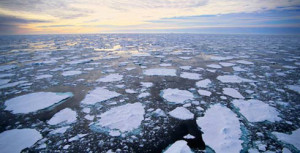Climate change is an issue that not only effects everyone, but can also be caused by everyone. Due to this, in order to prevent furthering the issue, initiative will have to be taken by a significant portion of the general population. We can make processes and technology more environmentally clean and efficient, but it does not matter if individuals refuse to utilize more environmentally clean means in their daily lives.
The first step that has to take place in combatting the issue of climate change is fixing the general ignorance held by some of society. Nearly thirty percent of Americans still believe that climate change is not going on. An environmental reform can not possible be completely successful in preventing harmful emissions into the atmosphere if only a fraction of the entire population is actively looking to take cleaner actions. Even many who acknowledge that climate change is present, don’t take everyday actions to decrease emissions due to inconvenience. Therefore, what must be done first is to get all of society to perceive the issue and to care about its implications. This is extremely hard to achieve due to the stubbornness of skeptics to change their opinions and for the fact that society has become accustomed to convience in their everyday lives. Although this could be difficult to achieve, it is crucial to halting the expanse of climate change. Actions that could be taken include additional attempt to educate individuals of the prevalent evidence of climate change and by providing cheap and efficient means of reducing carbon dioxide and greenhouse gas emissions. For instance, currently it can be expensive to own a clean electrically power car. If prices and popularity of these vehicles decreases, individuals will be more likely to stray away from fossil fuel power vehicles that harm the environment.
Additionally, pushing for clean sources of energy is critical in reducing our carbon footprint as a society. The primary candidate for clean energy in households is solar power. This form of energy has large potential to decrease the amount of carbon dioxide emissions if utilized by a larger percentage of individuals. Houses that are powered by solar power, are estimated produce enough power to drive approximately four hundred thousand miles by burning fossil fuels after a total of thirty year. The issue with these clean power sources is that they are currently expensive and do not make up for their large investigate for many years. Therefore, individuals are often skeptic of implementing solar power in their houses due to the long investment periods in order to make back their invested money. Hopefully, as more research and development is done on solar power, it may become cheaper to install in the future similar to the decreasing price of electrically powered vehicles.
Similar to the utilization of solar power, a crucial means in order to reduce carbon emissions comes from utilizing renewable resources to generate power from energy companies as opposed to fossil fuels. Wind power seems the best candidate to replace burning fossil fuels as it is both clean and efficient. Large wind farms have been recorded to be able to produce almost two and half times the electricity of power plants. The issue is that the wind can often be sporadic and unpredictable. This distrust of the wind from day to day often makes power companies worried about straying away from fossils fuels and investing in wind power. Additionally, some individuals call wind farms “ugly” and do not like living near windmills. Although it may be difficult to implement wind power on a large scale, it would play a significant role in reducing the total amount of carbon dioxide and greenhouse gas emissions.
Obviously, we still have a long way to go in the fight to halt climate change. There are still many individuals who have to get on board actively reducing their carbon emissions and seeking clean forms of energy. Luckily, the issue has been becoming more prevalent and well-known among Americans. I encourage you to do even just a small amount every day to reduce your contribution to climate change. There is no easy or quick fix to the issue. It is up to society as a whole to stand together united in order to protect the only home that they will ever have.
http://greenenergychronicles.com/index.php/category/wind/
http://alternativeenergy.procon.org/view.answers.php?questionID=001244
http://www.solarcity.com/residential/benefits-of-solar-energy








